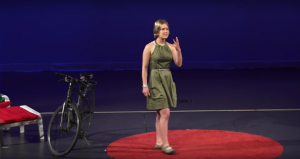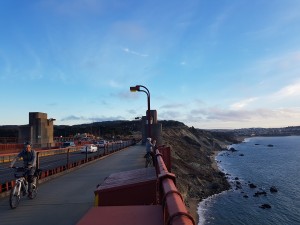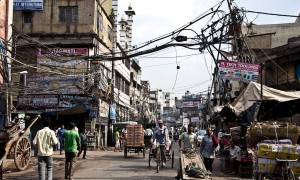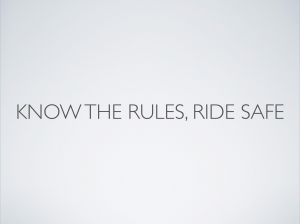Hi everyone
My name is ettore marzotto,
Today i want to invite you to think about the bicycle rules of the road, illustrated in this leaflet, please pass it around and have a quick read through. With a show of hands how many people feel safe about riding in San Francisco?
Great thanks,
I now will talk about my research into wether or not a correlation exist between knowing the bicycle rules of the road and how safe you feel about riding in san francisco. In other words, does your knowledge of bike rules affect your perception of how safe it is to ride in San Francisco?
Lets find out!
In order to prove if a correlation existed between my two areas of focus, knowledge of the bike rules, and how safe people feel about riding in san francisco i decided to formulate a survey. A survey is a useful tool to gather data in an quick and simple way. Surveys usually require the use of questionaries, i made my questionnaire using an app called Qualtrics found on Canvas.
Here is my questionnaire
I will now talk about why i chose this format and how it served the purpose of my investigation. So, i was interested in finding out how confident people were in their knowledge of the bike rules, which is why i chose the style of Strongly Agree, agree and so on. Instead of a simple yes or no answer this style gives me different degrees to which someone knew that a statement was a bike rule. This was important for me in order to judge if different levels of knowledge affected peoples perception of how safe it is to ride in San Francisco.
A survey also has to be well formed in both the structure and order of the questions so that people are clear on what they have to do. I chose to write my instructions at the top of the survey but this might have caused the people who did not see those instructions to be confused while taking the survey. I could have been more clear by sending a cover letter, which is often sent out with a survey in order to explain your purpose.
I though that it was logical to order my survey as i did because it made people think about the bike rules before thinking if they felt safe or not. Which gives me better data or evidence to prove if a relationship does in fact exist.
Another key component of a survey is the sampling size and population. How many people and who we send our survey to. In my case because i was not able to access the right group of people and because i had a small sampling size of only 22 people my results might not be a credible.
Before i go into my data analysis with a show of hands how many of you would say that after reading the bike rules from the leaflet felt safer towards riding in San francisco?, didn’t change your opinion?, felt less safe?
Thanks,
Your feedback and the feedback from people who took the survey allowed me to evaluate the possibility of a relationship between my area of focus. I gathered the evidence and looked at it in different ways such as plotting a table showing how many people chose which option for each question or a bar chart also showing the distribution of answers.
As you may have noticed all the question before the last are bike rules, i did this so that when i got the answers back i could calculate how well people knew the rules and compare it to how safe they felt. I gave each value a score out of 7 so that i could add them up and divide that by the amount of questions that were on bike rules and get an average score. I then compared that score with how much people felt safe and plotted a graph showing the correlation.
This is what i got, there isn’t a very strong positive correlation but you can see that for most people who answered the statements on the bike rules with strongly agree or agree which are the people with a higher score, were more likely to feel safe about riding in San Francisco. Although that was not always the case as you can see some people despite knowing the rules still did not feel safe, and similarly people who did not know the rules so much felt safer. Likewise some of you said that you felt safer after knowing the rules while others did not.
This suggests that some degree of relationship does in fact exist, but i believe that i have insufficient data to fully prove a correlation.
In conclusion, i had set out to find if a correlation existed between the bike rules of the road and how safe people feel about riding in San Francisco. Because of the limitations discussed in my speech, such as small sampling size or format i was not able to gather sufficient evidence to prove a relationship. As i said my data shows some relationship, that a higher knowledge of the bike rules might cause people to feel safer but through my study this cannot be proven. Hopefully someone will do a more intense research and be able to find the correlation, until then;
Know the rules and ride safe !




